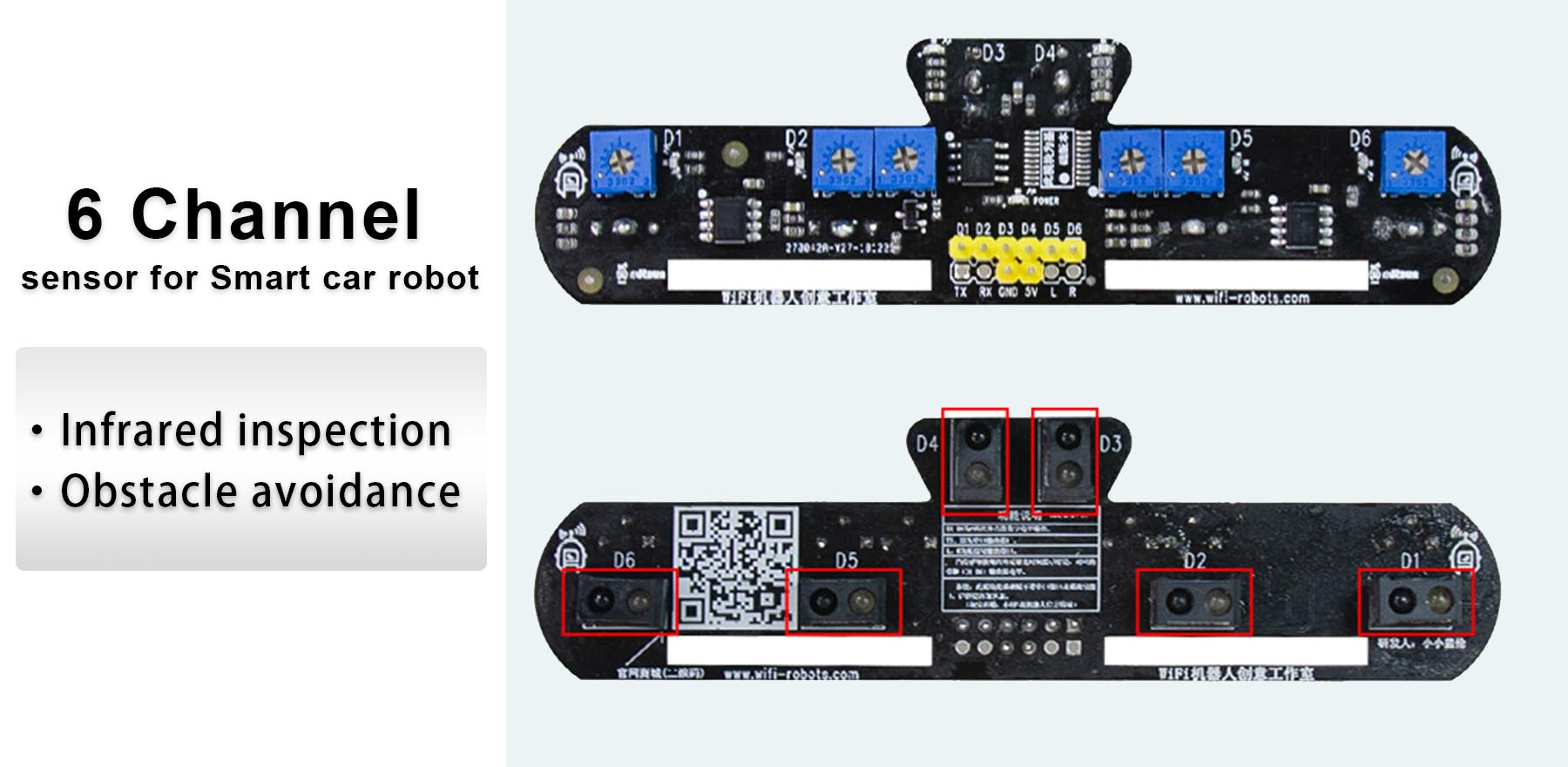6-Channel Infrared (IR) Tracking and Obstacle Avoidance Sensor Module – your new best friend for creating smarter, more agile robots and automated systems. Whether you’re building a line-following champion, a maze-solving genius, or a nimble obstacle-dodging rover, this module is packed with features to bring your vision to life.
What Makes This 6-Channel IR Sensor a Must-Have? 🌟
This isn’t just any sensor; it’s a powerhouse of perception for your projects:
- Precision Six-Way Tracking: This module offers unparalleled accuracy for line following. Detect black lines on white surfaces or white lines on black surfaces with ease. More sensors mean smoother, more reliable tracking!
- Effective Obstacle Avoidance: The outer sensors can also be used to detect obstacles in front of your robot, helping it navigate complex environments without collisions.
- Adjustable Sensitivity: Each of the six channels features an onboard potentiometer. This allows you to fine-tune the detection distance and sensitivity for each sensor individually, adapting to different surfaces, line colors, and ambient light conditions.
- Clear Visual Feedback: Equipped with power and status LEDs for each channel. These instantly tell you when a line or obstacle is detected, making debugging and calibration a breeze.
- Easy Microcontroller Integration: Provides digital outputs (HIGH/LOW) for each channel, making it straightforward to interface with popular microcontrollers like Arduino, Raspberry Pi, ESP32, and more.
- Versatile Power Input: Operates reliably on 3.3V to 5V, compatible with most common microcontroller logic levels.
- Compact & Durable Design: Features convenient mounting holes for easy integration into your robot chassis or project enclosure.

Getting Started: Testing & Adjustment Made Simple 🛠️
Getting this module up and running is surprisingly easy:
- Power Up: Connect VCC to your 3.3V-5V power supply and GND to ground. The power LED should illuminate.
-
Line Tracking Test:
- Place the module over a surface with a contrasting line (e.g., black electrical tape on a white board).
- Observe the status LEDs for each channel. When a sensor is over the line, its corresponding LED should change state (e.g., turn ON if detecting black, OFF if detecting white – this depends on the specific logic you implement or how the sensor is designed to react to reflected IR).
- Use a small screwdriver to gently turn the potentiometer for each channel to adjust its sensitivity. Aim for a reliable detection at your desired height above the surface (typically a few millimeters for line tracking).
-
Obstacle Avoidance Test:
- Point the sensor array towards a clear area, then bring an object (like your hand) in front of it.
- Adjust the relevant potentiometers (usually the outermost sensors) until the LEDs trigger at your desired obstacle detection distance.
Installation Schematic 🔩

Unlock a World of Applications! 🚀
The possibilities are virtually limitless:
- Competitive Line-Following Robots: Build speedy and accurate robots for competitions.
- Maze-Solving Robots: Create intelligent bots that can find their way through complex mazes.
- Obstacle-Avoiding Vehicles: Design rovers that navigate autonomously around objects.
- Edge Detection Systems: Prevent your robot from falling off tables or ledges.
- Smart Sorters/Counters: Use it on a mini conveyor belt to detect and count items.
- Interactive Art Installations: Trigger events or animations based on proximity or line detection.
Important Notes for Optimal Performance 📝
- Ambient Light: Strong infrared sources (like direct sunlight) can interfere with sensor readings. Shield the sensor if operating in such environments.
- Surface Reflectivity: The detection distance and reliability can be affected by the color and reflectivity of the surface and the line.
- Calibration is Key: Always calibrate the sensitivity for your specific application and environment for best results.
- Gentle Adjustments: Turn potentiometers slowly and carefully.
Ready to Give Your Robot Super-Senses? 💡
Stop dreaming and start building! This 6-Channel IR Tracking & Obstacle Avoidance Sensor Module is the perfect addition to your electronics toolkit, opening up a new realm of intelligent and interactive projects.
👉 Click here to get yours and elevate your creations!
[https://www.xiaorgeek.net/products/smart-car-robot-6-channel-infrared-patrol-module-obstacle-avoidance-sensor]
#RobotSensor #IRSensor #LineFollower #ObstacleAvoidance #ArduinoProjects #RaspberryPiProjects #DIYElectronics #Robotics #TechGadgets #SmartProjects #TCRT5000

